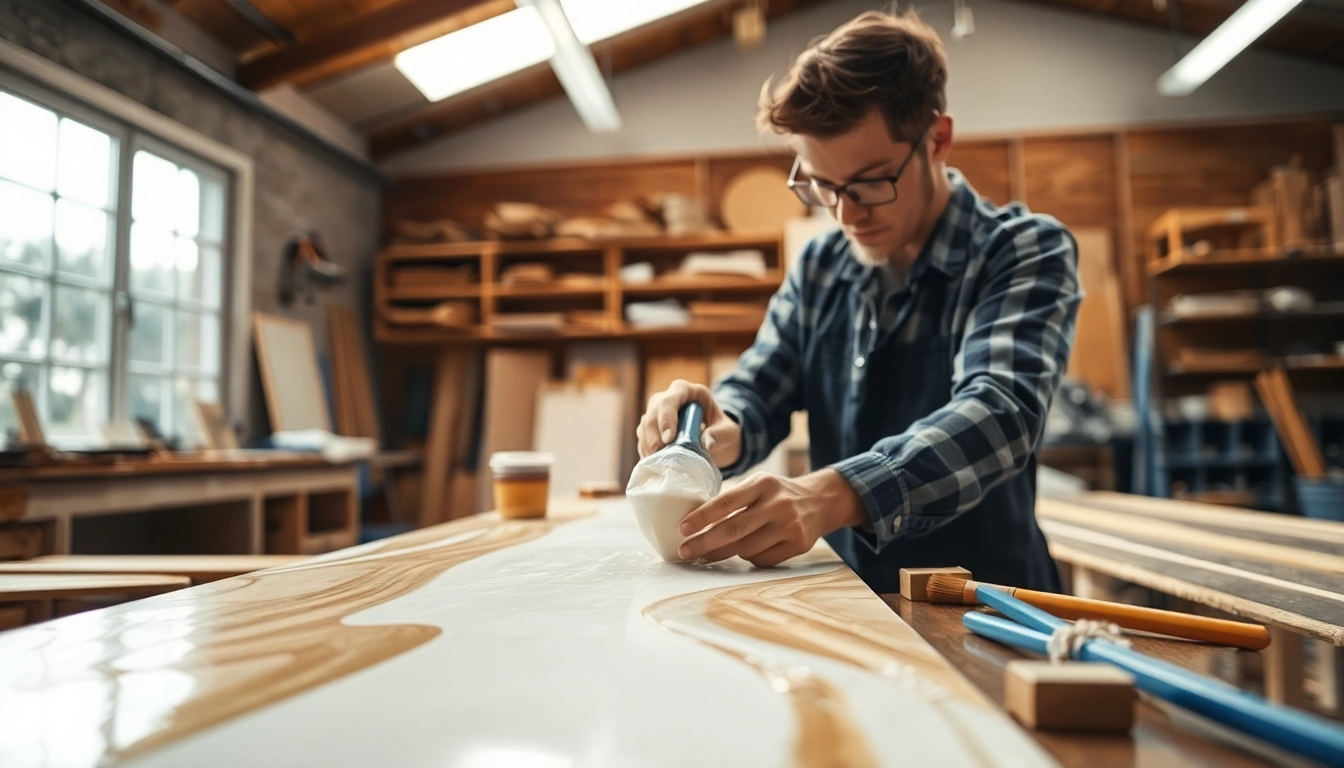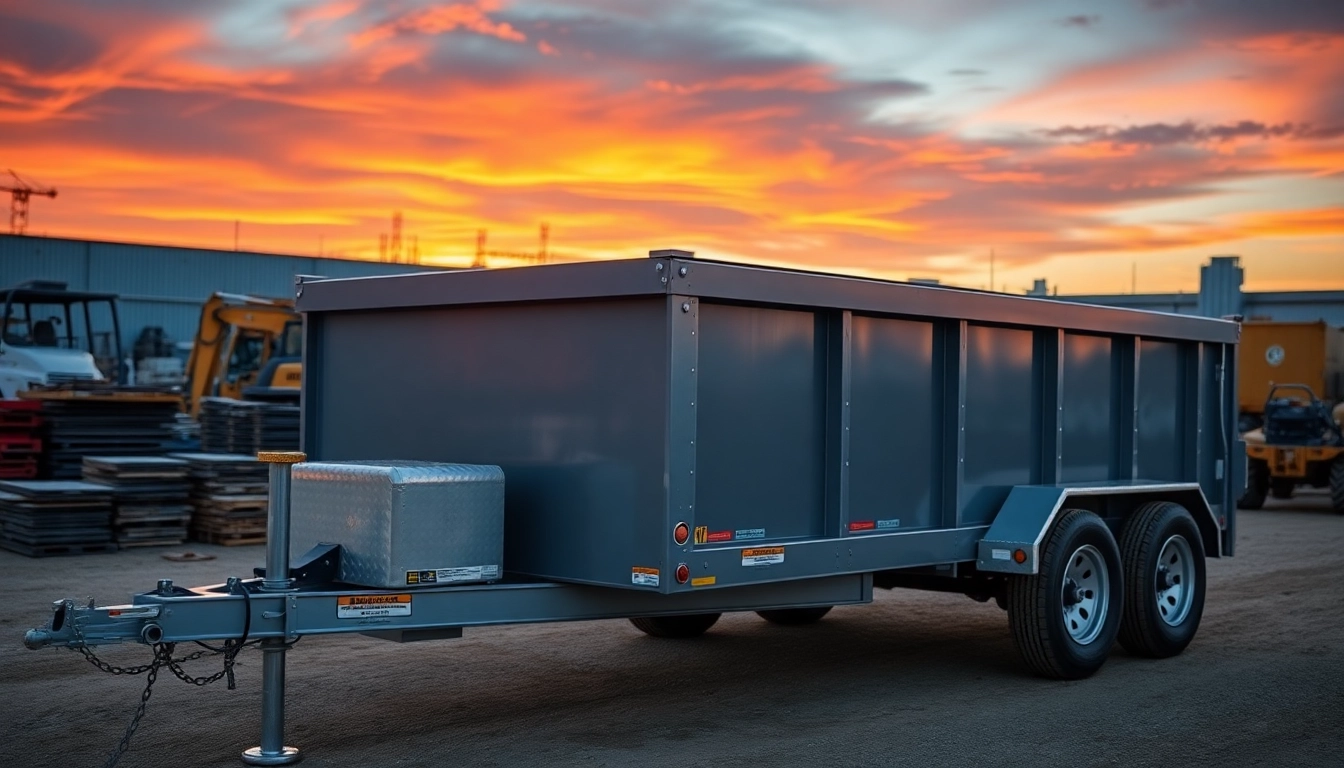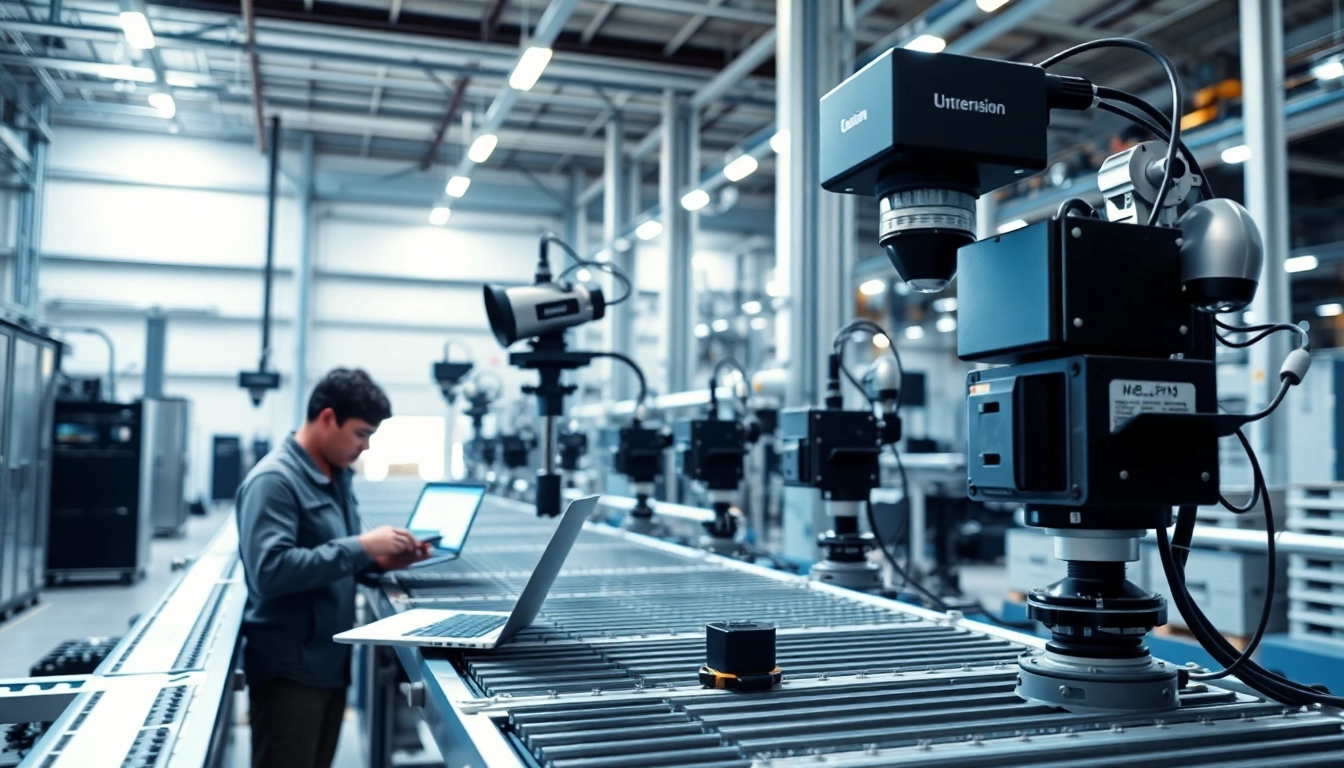Understanding Laminating Resin: Types and Properties
What is Laminating Resin?
Laminating resin is a type of synthetic resin primarily used in the manufacturing of composite materials. This resin serves as a binding agent that holds together various layers of materials, such as fiberglass, to form a robust, durable finished product. The unique properties of laminating resin allow it to cure into a hard, resilient material that can withstand various environmental conditions, making it an ideal choice for various industrial applications.
Generally, laminating resin is categorized into two main types: epoxy and polyester. Each type has its own set of advantages and disadvantages, which may influence its use based on the specific requirements of a project. For more insights about the various forms of laminating resin, laminating resin can be explored in detail.
Types of Laminating Resin Available
There are several types of laminating resin available in the market, each designed to meet specific application needs:
- Polyester Laminating Resin: Known for its affordability and ease of use, polyester laminating resin is a popular choice in marine applications and other manufacturing domains. It’s widely used for creating lightweight yet strong structures such as boats.
- Epoxy Laminating Resin: While typically more expensive, epoxy laminating resin is often favored for its superior bonding qualities and resistance to moisture and chemicals. This type is ideal for high-performance parts where strength and adhesion are paramount.
- Vinyl Ester Laminating Resin: This resin provides a unique combination of properties from both epoxy and polyester. It offers superior strength and corrosion resistance, making it suitable for more demanding environments.
Key Properties of Laminating Resin
Understanding the essential properties of laminating resin is crucial for selecting the right type for a given application. The following are key characteristics:
- Curing Time: Laminating resins can have varying curing times, which is significant in project planning and execution.
- Viscosity: The viscosity, or thickness, of the resin affects its ease of application and the type of method employed during manufacturing.
- Mechanical Strength: A vital property for structural applications, the mechanical strength of laminating resin determines how well it can endure stress.
- Environmental Resistance: Resistance to heat, moisture, and chemical exposure is crucial for many applications, particularly in marine and automotive industries.
Applications of Laminating Resin in Various Industries
Laminating Resin in Marine Applications
In marine industries, laminating resin is primarily used in constructing boats and yachts. The inherent water resistance and lightweight nature of laminated structures make them favorable. Boats built with laminating resin can endure harsh marine environments while remaining buoyant and strong.
Techniques such as fiberglass layup often utilize laminating resin to create layers of reinforcing fabric infused with resin, resulting in a highly durable composite. This process often remains tacky between layers, enhancing adhesion and overall mechanical performance.
Use of Laminating Resin in Automotive Manufacturing
Automotive manufacturing increasingly employs laminating resin for creating lightweight components, contributing to fuel efficiency and performance improvements. Parts such as body panels, structural components, and interior trims benefit from the high strength-to-weight ratio that laminating resins offer.
In addition, the ability to form complex shapes using laminating resin helps create innovative designs that cater to both aesthetic and functional requirements in modern vehicles.
Architectural and Artistic Uses of Laminating Resin
Beyond industrial applications, laminating resin has made its mark in architecture and artistic endeavors. Artists use resin as a medium to encapsulate objects, create sculptures, or even as coatings that enhance the visual appeal of various installation works.
Architects and designers are also exploring laminating resin for structural and decorative applications in buildings and interiors. The ability to create transparent or colored layers opens up new possibilities for light manipulation and aesthetic designs in modern architecture.
Best Practices for Working with Laminating Resin
Preparing Your Workspace for Laminating Resin Projects
A well-prepared workspace is essential for achieving successful results with laminating resin. Ensuring proper ventilation to reduce exposure to harmful fumes and ensuring that all tools and materials are easily accessible are crucial considerations.
Using protective gear such as gloves, goggles, and masks is vital to safeguard against chemical exposure. Moreover, having a clean area free from dust and debris helps prevent contamination of the resin mixture.
Mixing and Curing Laminating Resin Correctly
Mixing laminating resin requires precision and adherence to specific ratios, especially when working with two-part systems. Following the manufacturer’s guidelines is crucial to avoid issues such as incomplete curing or poor bond strength.
Moreover, the curing process should be monitored in favorable conditions regarding temperature and humidity for optimal outcomes. Incorrect curing can lead to noticeable defects in the final product, necessitating additional work.
Health and Safety Considerations with Laminating Resin
Safety should always be a priority when working with laminating resin. Key health considerations include:
- Fume Exposure: Fumes released during the mixing and curing of laminating resin can be harmful, so ensuring adequate ventilation is imperative.
- Skin Contact: Direct exposure to uncured resin can cause skin irritations. Protecting skin with proper clothing and gloves is necessary.
- Ingestion Risks: Avoid eating or drinking around resin since accidental ingestion can lead to health issues.
Challenges and Solutions When Using Laminating Resin
Common Issues with Laminating Resin and How to Overcome Them
Despite its numerous benefits, several challenges can arise when working with laminating resin:
- Bubbles and Voids: Air can become trapped in the resin, leading to bubbles. To minimize this, using a vacuum pump or ensuring proper mixing techniques can help.
- Inadequate Curing: Insufficient curing can lead to weak bonds. Monitoring the temperature and humidity throughout the process can help achieve optimal results.
- Color Discoloration: Ultraviolet (UV) exposure can lead to fading. UV-stabilized formulations can be used to counteract this issue.
Maintaining Quality While Using Laminating Resin
To maintain high quality, it is important to regularly test the laminated products to ensure they meet performance standards. Establishing quality control measures during the mixing, application, and curing stages guarantees that all products function as intended.
Keeping detailed records of experiments with different formulations also aids in refining processes and enhancing overall quality.
Cost-Effectiveness of Laminating Resin Solutions
The cost-effectiveness of using laminating resin hinges on its performance versus the eventual durability and strength of the final product. While some may perceive laminating resin as a costly initial investment, its longevity in various applications often results in overall savings.
Additionally, evaluating the lifecycle costs, including maintenance and replacement expenses, can reveal the advantages of laminating resin, making it a wise choice for many industries.
Future Trends in Laminating Resin Technologies
Innovations in Laminating Resin Formulations
Research and development efforts in laminating resin technologies continue to evolve, with innovations focusing on enhancing performance, such as improved thermal resistance and adhesion properties. Bio-based and environmentally friendly formulations are gaining traction, appealing to markets conscious of sustainability.
Additionally, advancements in manufacturing techniques, such as automated mixing and dispensing systems, are streamlining resin application, leading to better consistency and reduced waste.
Environmental Impact and Sustainable Practices
Sustainability in laminating resin production is becoming increasingly important. Manufacturers are exploring ways to reduce the carbon footprint of resin production and improve recyclability. Incorporating recycled materials into resin formulations is one way to achieve these sustainability goals.
Moreover, increased regulatory scrutiny regarding chemical safety is encouraging manufacturers to develop formulations with lower hazardous substances, improving overall safety and compliance.
Emerging Applications for Laminating Resin Materials
With ongoing research, the range of applications for laminating resin continues to broaden. From advanced aerospace components to lightweight sports equipment, new markets are emerging that could revolutionize the way we leverage these materials.
Exploration in the field of 3D printing is also leading to new ways of utilizing laminating resin, allowing for innovative designs and rapid prototyping standards that were previously difficult to achieve.



